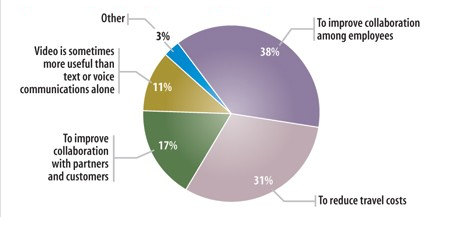Thanks to the growing popularity of H.264 video encoding technology, desktop video conferencing has becoming more and more essential for business to enhance collaboration and communication as well as to cut costs, increase work efficiency and improve performance. According to Stamford, Conn.-based research firm Gartner, Inc, more than 200 million workers worldwide will run corporate-supplied desktop video conferencing by 2015, up from 7 million in 2008.
Desktop video conferencing as its names implies, uses software on your personal computer along with a webcam and microphone to participate in a video conferencing with hardware-based video conferencing systems.
Unlike personal video conferencing software such as Skype, FaceTime, or iChat which are not standard-based, and can't be connected to standard hardware video conferencing software. Desktop video conferencing integrates plug-and-play video communications functions into familiar office productivity software which makes it affordable and highly productive
What are the benefits of desktop video conferencing?
The following chart on the right illustrates some of the benefits:

Apart from improving employee and customer collaboration while reducing travel cost, desktop video conferencing can also give us other benefits such
as remote control and environmental friendly:
- Remote Control: One of the featured functions is remote control with desktop sharing, anyone in your meeting can share their desktop and grant remote keyboard and mouse control to another participant.
- Go green: It dovetails with enterprise efforts to practice green IT. The reduction in carbon footprint from cutting back travel in favor of desktop video conferencing is well documented
The demand for desktop video conferencing within an organization continues to grow. Has your organization considered making the move? |

